'Cleared for Launch' An F-14 Tomcat Diorama
By Gary Meinert
|
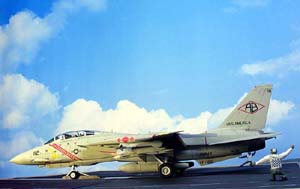 |

|
 |
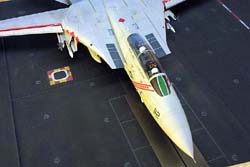 My 1/48 scale carrier deck diorama " Cleared for Launch", depicts a scene in 1982 aboard the USS America (CV-66). The F-14A Tomcat is attached to the No. 1 catapult (starboard bow cat). The two safety troubleshooters have just completed their final inspections of both sides of the aircraft and are signaling each other that all is ready and the launch sequence can proceed.
My 1/48 scale carrier deck diorama " Cleared for Launch", depicts a scene in 1982 aboard the USS America (CV-66). The F-14A Tomcat is attached to the No. 1 catapult (starboard bow cat). The two safety troubleshooters have just completed their final inspections of both sides of the aircraft and are signaling each other that all is ready and the launch sequence can proceed.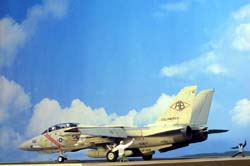 corrected several errors: all three landing gear are angled back too far, the tail hook is too long, the air intake ramps are in the incorrect position for an aircraft on the ground, and there are no engraved lines for the glove vanes. Curiously, there is no HUD (head up display), so I scratch-built one.
corrected several errors: all three landing gear are angled back too far, the tail hook is too long, the air intake ramps are in the incorrect position for an aircraft on the ground, and there are no engraved lines for the glove vanes. Curiously, there is no HUD (head up display), so I scratch-built one.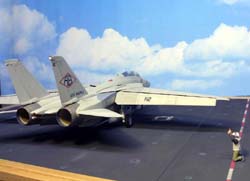 Figures
Figures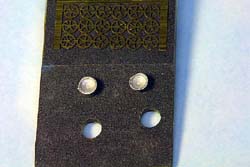 The deck surface material consists of sheets of 220 grit sandpaper, which I positioned, trimmed, and glued with contact cement onto the plastic base. Then I flipped over the plastic base and used a number 11 X-Acto blade to cut out the layer of sandpaper from the top of each hole. Later I glued each of the metal wells in place.
The deck surface material consists of sheets of 220 grit sandpaper, which I positioned, trimmed, and glued with contact cement onto the plastic base. Then I flipped over the plastic base and used a number 11 X-Acto blade to cut out the layer of sandpaper from the top of each hole. Later I glued each of the metal wells in place.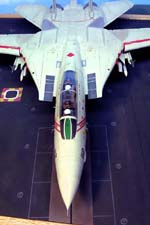 Conclusion
Conclusion